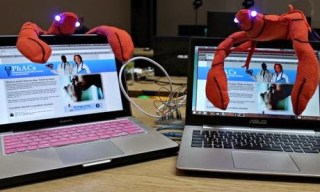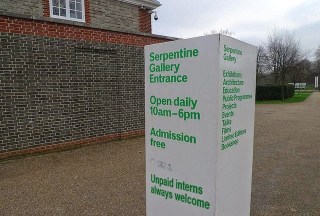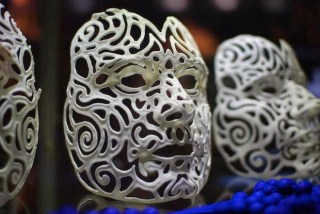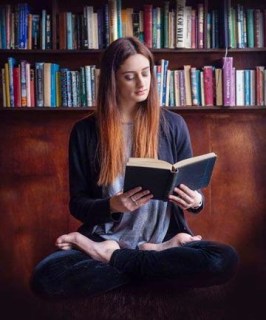
As someone who reads a killing amount of text every week—news, blogs, email, journals, newspapers, reports, even (luxury of luxuries) books—I find switching over to nonverbal mode to be a sweet relief. Besides, other modalities (pictures, videos, sound) give us a different perspective on a topic. That’s why I love it when I can share videos via Futurist Friday here on the Blog, and images via CFM’s Pinterest boards—these pictures and vids provide literal “glimpses of the future.”
 |
| Image from “Smart Art: Hack the Space at Tate Modern”In The Guardian |
 |
From “Santa’s Con: Protestors Challenge Serpentine Gallery on Unpaid Labor” from HyperAllergic |
 |
| From Make Magazine |
Here’s another example of an image leading me to a story. In this case, scanning other people’s boards about 3-D printing, I found this striking image and used it in a Wordless Wednesday post. Later I co-opted it to illustrate how technology is supporting the creation of personalized products, since Harker encourages buyers to customize his masks to their own face using 3D scanning.
Rising Tides
 |
| Sundial Pillar at Seven Dials by Michael Pinsky |
My project assistant, Sylvea Hollis, tracked down artist Michael Pinsky and got his permission to use a PR shot of this installation in TrendsWatch. “Plunge” used LED lights installed on landmarks around London to visualize sea levels a 1000 years in the future.
Wearable Technology
 |
| Floral Porcelain Limb, Alternative Limb Project |
I note in the introduction to TrendsWatch 2015 that this year’s trends intertwine with each other in many ways. I actually used this picture of a bespoke prosthetic leg for the essay on personalization (since it reflects a highly personal vision of what the user, Kiera Roche, wants from from her prosthesis, but I pinned it to Wearable Tech. Most of the images on this theme are endless variations on “look at our cool new gadget! It synchs with your smartphone! It connects to the web!” This picture says a thousand words about how technology can serve deeply human needs about identity and self. Kiera says, about her vision for this limb
“My attitude to being an amputee and wearing an artificial limb has changed with time. To begin with one is very aware of being different, of being disfigured, but as time moves on one adjusts and changes perspective. In the first few years my focus was on trying to be normal, wearing clothes that hid the fact that I was an amputee, but over the years I have become more comfortable with who I am and I now embrace having different legs for different activities and different occasions. I think losing a limb has a massive impact on one’s self esteem and body image. Having a beautifully crafted limb designed for you makes you feel special.”
Slow Culture
 |
| From Stuff.co.nz |
I loved this image of a slow reading club in Wellington, New Zealand. We couldn’t track down the photographer, but it inspired us to stage the picture of me that appears in the introduction to TrendsWatch. (OK, we added dinosaurs and a robot, but hey, embellishment).
So, if you are a visual thinker, and like noodling around with pictures to spark your creative process, start your own Pinterest boards, and follow CFM. I look forward to seeing what you pin.









Comments